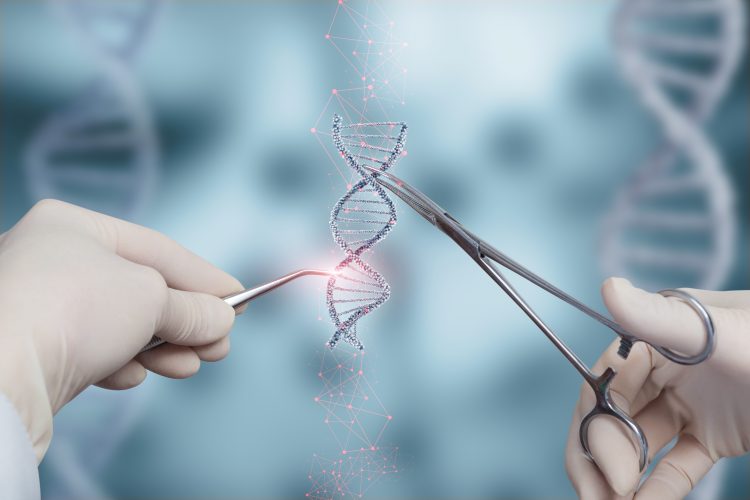Tackling complex manufacturing challenges in modern drug development
Posted: 26 May 2025 | Drug Target Review | No comments yet
Chief Scientific Officer at Solvias reveals how CROs are overcoming manufacturing challenges and harnessing AI to fast-track the development of groundbreaking cell and gene therapies.


Daniel Galbraith, Chief Scientific Officer at Solvias, brings extensive expertise in the pharmaceutical and biotechnology sectors. In his role, he provides both strategic and technical guidance to Solvias, a global Contract Research Organisation (CRO) that offers critical analytical services to the pharmaceutical industry. With a particular focus on biologics, cell, and gene therapies, Galbraith’s work is centred on equipping drug developers with the tools, insights, and support needed to advance their therapies from concept to clinic.
In this interview, Galbraith shares his vision for the future of drug discovery, the challenges in preclinical and clinical development, and how emerging technologies are transforming the landscape of therapeutic innovation.
Meet the demands of modern drug development
As the Chief Scientific Officer at Solvias, Galbraith’s role is to maintain a comprehensive view of the pharmaceutical industry. His team works closely with clients, helping them navigate the increasingly complex regulatory and analytical landscape. “A big part of my role involves interacting with customers, learning from them on their challenges and providing solutions to expedite their path to clinical trials or commercialisation of their drug,” Galbraith explains.
We are driving rapid analytics to support the release of cell and gene therapies and other biologics. In particular, molecular tools such as Next-Generation Sequencing are being deployed to reduce timelines and cost of releasing these drugs.
His leadership has played a critical role in driving Solvias’ technical and regulatory services forward, particularly in the emerging areas of biologics, cell therapies, and gene therapies. These innovative modalities present both exciting possibilities and unique challenges in drug discovery and development. According to Galbraith, the company is working hard to support the development of cell and gene therapies, driving rapid analytics to support the release of these therapies. Solvias’ use of molecular tools, including Next-Generation Sequencing (NGS), is integral in speeding up timelines and reducing costs for releasing these complex therapies.
“We are driving rapid analytics to support the release of cell and gene therapies and other biologics. In particular, molecular tools such as Next-Generation Sequencing are being deployed to reduce timelines and cost of releasing these drugs,” he notes. “We shall have these in place later this year for GMP release.”
Biomarkers aren’t just supporting drug discovery – they’re driving it
FREE market report
From smarter trials to faster insights, this report unpacks the science, strategy and real-world impact behind the next generation of precision therapies.
What you’ll unlock:
- How biomarkers are guiding dose selection and early efficacy decisions in complex trials
- Why multi-omics, liquid biopsy and digital tools are redefining the discovery process
- What makes lab data regulatory-ready and why alignment matters from day one
Explore how biomarkers are shaping early drug development
Access the full report – it’s free!
Addressing the complexities of drug manufacturing
The challenges facing the development of innovative drug modalities are significant and multi-faceted. One of the most pressing challenges is the complexity of manufacturing these drugs. With the rise of advanced therapies, particularly cell and gene therapies, drug manufacturing is becoming more intricate.
For example, cell therapies use living cells as treatments, allowing for the combination of multiple biologically active molecules into complex, hybrid drugs. However, the testing, release, and regulatory oversight required for these therapies present challenges at every stage of production. Galbraith highlights how the increasing focus on process stability and regulatory scrutiny is making analytical services even more essential for drug manufacturers.
“Manufacturing of drugs is getting more complicated in many ways. For example, cell therapies allow researchers to use cells as medicine. We can combine multiple biologically active molecules to create hybrid drugs. Testing and releasing these raw materials, intermediates, and final drug products is becoming more and more challenging,” Galbraith explains. “Regulators are also much more interested in the manufacturing process, especially when it comes to stability.” As the regulatory landscape evolves, the role of analytical services in the development process is becoming increasingly significant. Solvias works closely with its clients to ensure that these challenges are met head-on, providing the necessary insights to streamline production and compliance processes.
Harnessing emerging technologies
The rapid pace of technological innovation is reshaping the landscape of drug discovery. As an advisor for Refeyn and Glen Clova Scientific, Galbraith is well-positioned to observe the potential of emerging technologies in driving drug development forward. He is particularly enthusiastic about the ways in which novel technologies, like those developed by Refeyn, can help address some of the most pressing challenges in drug manufacturing.
Because analytical questions from both manufacturers and regulators are increasing, we have to think smarter with novel technologies.
“Because analytical questions from both manufacturers and regulators are increasing, we have to think smarter with novel technologies,” he says. “Refeyn, for example, has a technology which can investigate and provide data on the aggregation of viruses, which is a key attribute for QC release of some gene therapy drugs.”
This type of advanced analytical technology is critical in ensuring that new therapies meet the necessary quality control standards. By improving the ability to track and analyse viral aggregates, Refeyn’s technology helps manufacturers optimise the release of gene therapies, which in turn accelerates their journey to clinical trials and ultimately to market.
The role of CROs in drug commercialisation
CROs, such as Solvias, play an essential role in the successful commercialisation of novel therapies. Even large pharmaceutical companies often rely on CROs for their expertise and resources. According to Galbraith, the in-depth scientific knowledge required to support innovative drug development is often not cost-effective for companies to maintain internally. This is where CROs come in.
Almost without exception, CROs are involved in the development of novel therapies.
“Almost without exception, CROs are involved in the development of novel therapies. Even the largest of Pharma companies use CROs – the reason being that the in-depth scientific resources needed to support these technologies are just not cost-effective enough to have internally,” he explains.
Moreover, CROs bring a unique perspective, having worked on numerous projects from different vendors following similar paths to commercialisation. This breadth of experience allows CROs like Solvias to identify patterns, recognise what works, and offer clients strategies that help avoid common pitfalls. As Galbraith puts it, this cross-pollination of ideas can save time and money for clients.
“For CROs and the life sciences industry as a whole, maintaining scientific leadership requires investment both in the people and the technology. No company can stand still in this field without a coherent plan in this direction. Without a plan, a CRO can quickly become an ‘also-ran’ in the field, only offering generic services,” he adds.
Transforming the biotech and pharmaceutical landscape
Galbraith’s extensive background in immunology offers him unique insight into the ongoing evolution of immunotherapies. The past few years have seen a remarkable surge in the development of immunotherapies, and the impact on the pharmaceutical and biotechnology industries has been profound.
“Overcoming pathways to enable mechanisms within the immune system to combat disease has already seen validation with some of the recently approved drugs in the short- and medium-term,” Galbraith explains. “This is encouraging and is likely to stimulate investment moving forward.”
These early successes in immunotherapy are likely to serve as a catalyst for further innovation in the field, encouraging more investment and research into harnessing the immune system for therapeutic purposes. Additionally, advancements in artificial intelligence (AI) are expected to play a pivotal role in the future of immunotherapy development, offering tools for more effective research and modelling. “Coupling these early positive results with some more intensive research and modelling allowed by innovations such as AI will likely improve the landscape,” he says.
AI, cost reduction, and new technologies
Looking ahead, Galbraith is optimistic about the potential breakthroughs that will reshape drug discovery and commercialisation over the next decade. He foresees that AI will play an increasingly critical role in target identification, modelling, and drug repositioning.
Modelling enabled by AI for target identification, target modelling, ADME models and repositioning of drugs will be incredibly significant for drug discovery.
The ability to harness AI for drug discovery promises to accelerate the identification of viable drug candidates and optimise the research process. “Modelling enabled by AI for target identification, target modelling, ADME models and repositioning of drugs will be incredibly significant for drug discovery,” Galbraith predicts.
In addition to AI-driven innovations, Galbraith emphasises the importance of reducing the cost of goods, particularly for cell and gene therapies. Lowering these costs will facilitate the commercialisation of these advanced therapies, allowing them to reach a wider patient population. “There are also a number of novel technologies which reduce the ‘people cost’ of analytics and will long-term be part of the journey of these drugs to wider commercialisation,” he notes.
Conclusion
Galbraith’s work at Solvias highlights the vital role CROs play in advancing innovation and supporting the commercialisation of new therapies. From addressing manufacturing challenges in biologics and cell therapies to leveraging emerging technologies like AI, Galbraith’s approach to drug discovery focuses on practical solutions and efficiency. As the pharmaceutical and biotechnology industries evolve, Solvias continues to help clients navigate these changes and accelerate the development of effective therapies.
Meet Daniel Galbraith


During his career, he has had the opportunity to work on roles which involved the pre-clinical and clinical development of innovative modalities. Prior to joining Solvias he spent 6 years as Head of Technology Management and Novel Products with Merck. This global role allowed him to develop the application of innovative technologies to bring new ATMP’s to the clinic. His role before this was as founder of BioOutsource, a company involved in the characterization of biotechnology products. He became the Chief Scientific Officer, overseeing the company’s development of a new USA site and R&D programmes.
He also has two current external positions as a member of the Scientific Advisory Board for Refeyn, a technology innovation university spin out, and as chair of Glen Clova Scientific, an early-stage vaccine development company. Dr. Galbraith received his PhD in Immunology from the University of Abertay and conducted his postdoctoral work at the University of Glasgow.
Related topics
Analysis, Analytical Techniques, Artificial Intelligence, Biologics, Cell Therapy, Drug Discovery, Drug Discovery Processes, Gene Therapy, Next-Generation Sequencing (NGS)
Related organisations
Solvias








